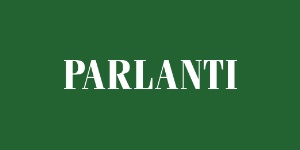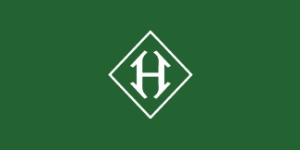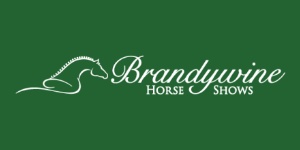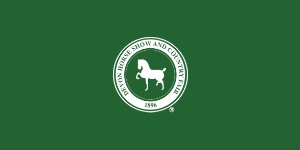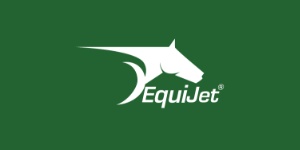In the competitive equestrian world, much attention is paid to the relationship between horse and rider. That bond is at the heart of great performances across every discipline, and the attention it gets is well-deserved.
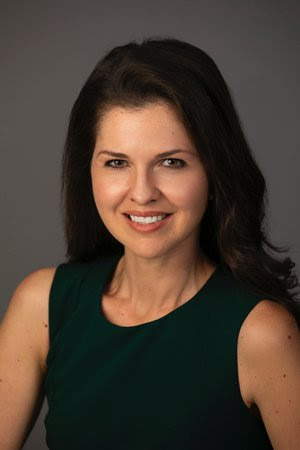
However, there’s another relationship that’s just as important– the relationship between rider and trainer. Some even say it’s the bond that forms the true foundation of success and that this bond between trainer and rider can even equal that between rider and horse. Something I’ve been fortunate enough to personally experience. It’s axiomatic that a good rider without a good trainer cannot succeed, and neither can a good trainer without a good rider. It takes two highly committed individuals, each with different skill sets, to come together, each playing a very different but vitally important role.
Sometimes, an equestrian has the gifts and skill sets required to be both professional rider and trainer. Once in a blue moon you meet one like Amanda Steege. Amanda and her striking horses are always favorites to win in the hunter ring, and her students at Ashmeadow Farm follow suit.
Amanda Steege has long been one of my favorite riders (and trainers), but not just because she is a double-threat talent with countless wins under her belt. She’s one of my favorites because of her character and the compassion she has for horses and humans alike. I consider her to be one of the finest ambassadors for the sport I know. Her interpersonal sincerity and genuine thoughtfulness have suffused Amanda’s entire operation, the very successful Ashmeadow Farm in Califon, NJ and Ocala, FL. I have personally made a hobby out of following Amanda and Ashmeadow on social media because you can truly feel the positivity from Amanda and ‘The Ladies’ that are part of her team.
Recently, I had the chance to have a long and spirited chat with her, where we explored some of the fascinating and lesser-known facets of her otherwise well-known and well-covered career. What makes her tick? What makes the bond between Amanda and her legendary partner Lafitte De Muze so unique? What are some of her hidden habits and techniques? What’s Amanda’s secret? Or secrets, I should say. Well, I asked those questions, and more.
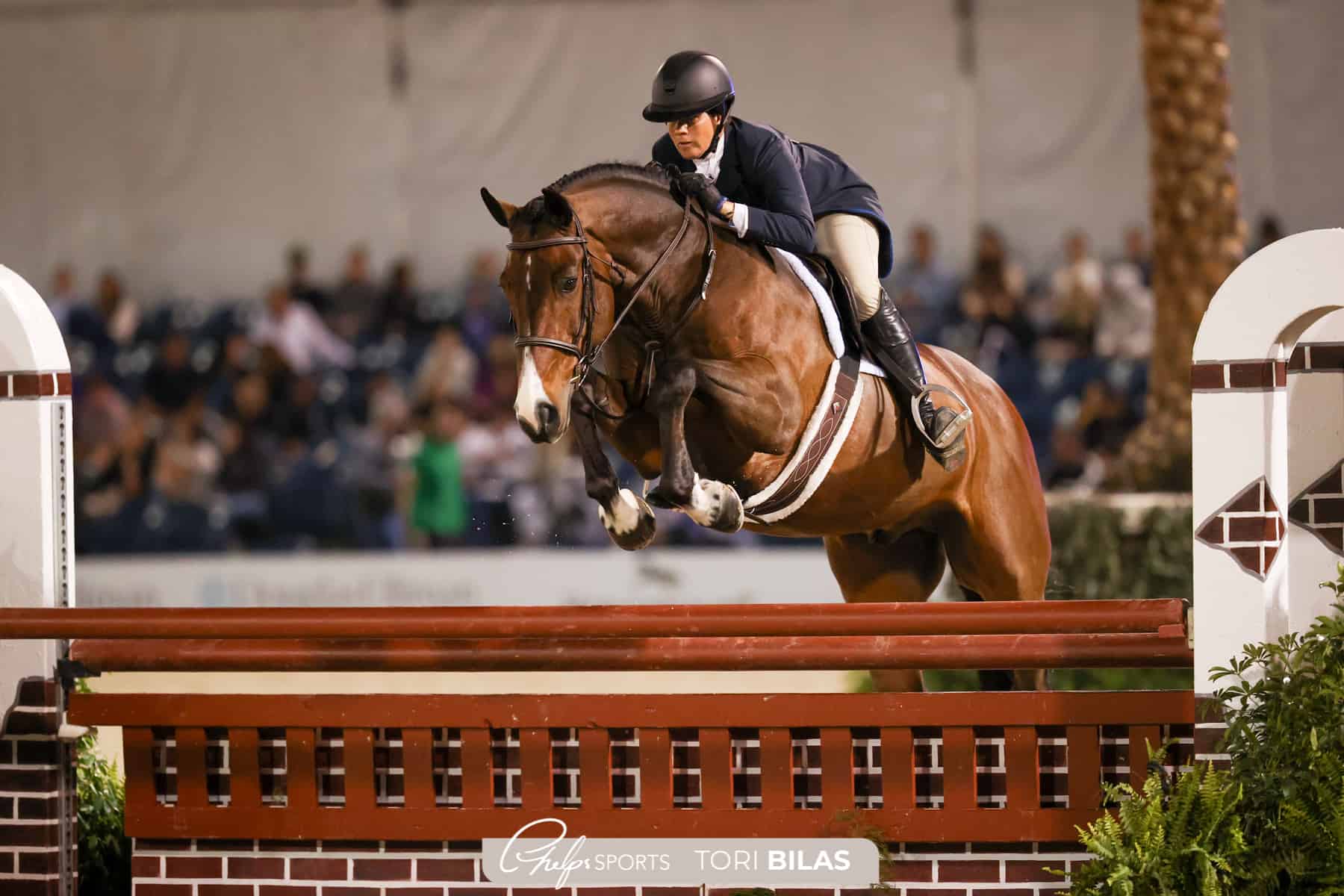
HD: Amanda, you’re a top hunter rider and top trainer with an incredibly successful program. Could you please tell me about your business model?
AS: Early on, I decided that I wanted to concentrate on hunters, and amateur riders. So people over the age of 18, and sort of young hunters, and hunters that I was going to show and develop. The reason for this was that I wanted my business to stay relatively small. I didn’t want to get to the point where I was having a lot of assistant riders and assistant trainers and having to send people to the various horse shows at the same time. In order to keep this small, I wanted everybody to share relatively similar goals and aspirations. And I really had a passion for riding and showing hunters, as well as for teaching amateur riders. I know some of that maybe came from my sports psychology background, but right from the start, when I started my business in 2001, my goal was to have a relatively small hunter business with young hunters and amateur riders. And that’s essentially what I’ve done all the way through.
HD: Do you ride and show all of your students’ horses or just some of them? How does that work?
AS: I have around 6 to 8 amateur ladies that ride with me, and most of them own two or three horses. They usually have at least one horse that is a little bit older, more experienced horse that they ride and show, and one or two younger horses that I’m developing to be for them in the future. That’s how most of the horses work. Lafitte [De Muze] is a little different—Lafitte is owned by Cheryl Olsten, and she doesn’t ride or show. He was just purchased for me to ride. But the majority of what I have is what I first described. I ride and show and develop all of the younger horses, but the older horses are very experienced and don’t need me to show them often—just one day early in the week before the ladies come to the show. I have a couple of girls that help me with riding at home, and they do some of the riding on those more experienced horses. But the younger horses are on my schedule mostly every day.
HD: It seems like an ideal model. If I ever get back in the ring, it will likely be in the hunters, and I sure would want to be one of your hunter ladies! Do you cap your total? I mean, who wouldn’t want to be one of your hunter ladies?
AS: Haha! It’s open and flexible. I was actually just talking about this the other day when I was discussing staffing. The most important part for me when I’m staffing and hiring new people to work for me, is that everybody is going to get along and work well together. It’s the same way with the clients. I try to really be smart about making sure that the people that I let come in and join the team as clients are people that I think are going to get along with the ladies that I already have, that share similar goals, and are going to work well together with the team. Sometimes we just are out of stalls and out of space, and I have to say that I can’t take a new person on. But for the most part, it’s not closed off at a certain number. It’s more whether I think that that person is going to be a good fit for the whole team because it’s just a much better experience if everyone gets along.
I think part of that is from growing up with parents in the business side of it, and learning early on what works and what doesn’t and how quickly it can go bad with one bad apple.
HD: Absolutely. It’s too good of a dynamic for any bad apples! Well, you must be doing something right at Ashmeadow, because your ladies all seem so enthusiastic and supportive! I love following you on Facebook and following Ashmeadow’s success. Another reason I love to follow you is seeing all the great posts by your ladies—their positivity even comes through on social media! And it has to be exciting for them. They must love watching those young horses come along and be able to show and share in the excitement of your success with them in the ring.
AS: They do for sure. And it does feel like such a team. All the ladies cheer on all our horses, not just their own. We spend our winters in Ocala, and for the last two years, we spent most of our winters at the new facility called the World Equestrian Center. Every Friday, they have derby classes that go in the big stadium ring, and in the morning, it’s a smaller 3’-3’3” derby. Following that, there’s a junior/amateur derby. Finally, they have the bigger derby, the class that Lafitte would do. A lot of the ladies’ younger horses do the derby in the morning, and they’re always there bright and early in the stands cheering everybody on!.
They all support each other. As you know, a lot of them show in the same classes either as adult hunters, modified adult hunters, or 3’3” amateurs. And the more of them that are around on a given week, the more fun it is, really! We all do a lot of dinners together and spend a lot of time together.
HD: That’s wonderful. I can see how it’s a dynamic you would want to protect. And it’s impressive. It’s not every day that you see that camaraderie in a competitive ‘A’ Circuit barn.

Now, you mentioned that Cheryl [Olsten, owner of Lafitte De Muze] is in a different position. She doesn’t ride, and Lafitte was just purchased for you. What was the goal with him?
AS: Cheryl has ridden for pleasure in her past. She has always had a passion for Hunter Derbies and for Derby Finals [USHJA International Hunter Derby Championships] in particular, and when she first moved to me as a client, she had a really lovely stallion named Loxley. I competed with Loxley in those classes, and he was quite successful, got ribbons at Derby finals. But his career was winding down, and Cheryl was wanting to do it again, so she asked me to look for a horse that I thought that I could someday win Derby Finals on. And that’s where Lafitte came into the picture as a young horse.
He was six turning seven when I first saw him. Actually, one of my other clients, Lisa Arena Davis (who’s a longtime client of mine) had seen a video— just a random video on YouTube. She sent me the videos of him, and I loved him. She loved him too, but it wasn’t the right time for her to get another horse. So I asked her if it was okay to share the videos with Cheryl. Cheryl sent me to Germany to try Lafitte and another horse that I had seen some videos of, and that was my first horse trip to Europe. I was scared, so I made my other client Margot Peroni come with me because I had never done it! We did the overnight flight to Germany, and got there at nine in the morning, got picked up, and I went to ride Lafitte in this tiny little indoor, and it was pouring rain. I loved him right away. Although, I think I was so nervous the first day—it was this small ring, and I was jumping huge jumps. We stayed there overnight, and I tried him again the next morning. That’s when I really knew that I loved him. Lafitte felt like the future.
HD: Amanda, that’s an incredible story of a successful first trip! It sounds like you really knew or were pretty confident before you even sat on Lafitte, and the brief trial solidified it.
AS: His videos were pretty impressive. Lafitte was with Gerd Schonebeck and his wife Ilona. Gerd has helped people in America buy hunters for a long time. He had had Lafitte for a few months, so he was being trained as a hunter already by the time I went to see him, which is very different as a lot of times you go over [to Europe] and they’re showing in the jumpers, and being trained like jumpers. You then have to try to evaluate in a short ride what you think you can do. Lafitte had sort of already started the process, so it was a little bit more obvious. Plus, he was just a natural. I think he was born to be a hunter. So when he came to the United States, it didn’t take long for him to walk in the First Year Hunters. I tried him in October, he flew over in November to New Jersey, and then he was only there for a week before going straight to Florida. He was a coming seven-year-old, and I started right away in the First Years, which I don’t think is the norm. I know it’s not the norm now that I’ve gotten to do it a little bit more. It all just came very easy to him.
I saw videos of him doing a 1.30m class out on a grass field, and I think it was in France. And he went around like a hunter. He jumped open water, but even that he jumped with his nose out, soft and relaxed. Sometimes it’s not quite as obvious when you see the videos, but it was pretty obvious with Lafitte. That being said, there are a few other top hunter riders that tried Lafitte before I did, and they did not pick him.
HD: Oh, that’s interesting.
AS: He was waiting for me!
HD: Absolutely. I think it is meant to be sometimes! I felt that way about my speed horse Marengo.
AS: Such a good horse.
HD: Oh, he was my soulmate for sure. Don’t tell my husband! Or is, I should say—he is still on the Dobbs farm. He was originally purchased to be my sister’s first amateur horse before I took over. But he had been tried and shown by one or two top grand prix riders. I was convinced he was just waiting for his ‘Mom’ to come along.
But I love you and Lafitte, and I love hearing about the story—especially from the beginning. So, when you know it’s the right horse, what makes you know it? And how long did (and does) it take you to know?
AS: So I’m really intuitive about that, and I don’t know if I could tell you exactly what it is that I feel. But my clients always joke that when I sit on a horse that I know I love, I get off. My trials are often about 15 or 20 minutes. I’m quick with that kind of thing. I get off and instantly say in my head, “Okay, I need this horse. What person is he/she going to work for?” And I start compiling a list: I’m going to ask this person, but if that person doesn’t want to do it, then I’m going to ask this person, and I just sort of know very quickly.
For me, it’s a feeling I have when I’m on them. But also, the horses that I really like, I always really like when I get off them, too. I really am particular about horses’ eyes and how horses communicate with you and look at you. I believe the horses that I feel really strongly about share a similarity in how they interact with me and how they look at me. I mean, Lafitte is almost human how he looks at you and interacts with you—he follows you with his eyes all the time.
HD: And you’ve told me about your conversations with Lafitte—He may as well be human!
AS: Hah! Exactly.
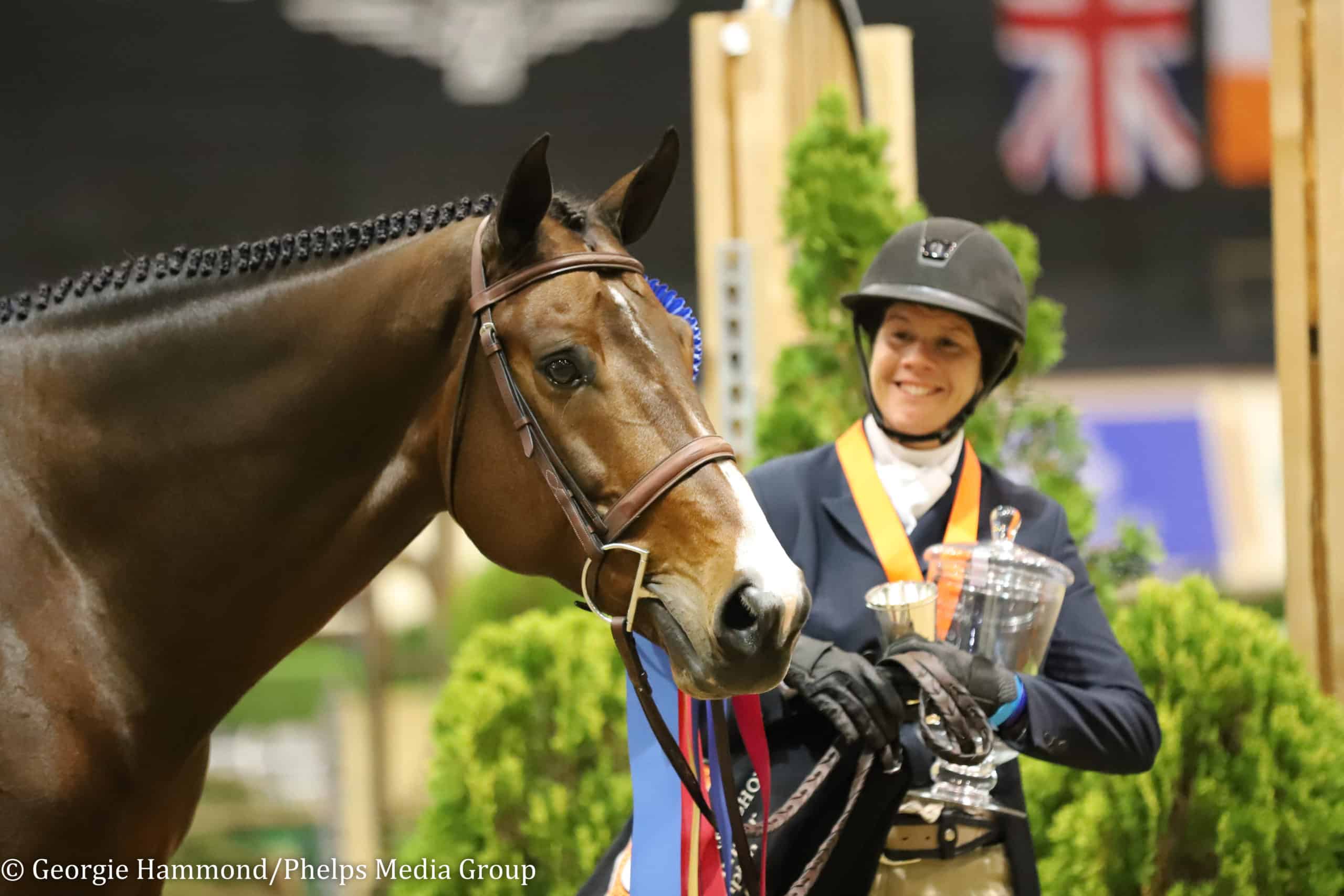
HD: So I’d like to know, there are many successful trainers and successful riders, but it’s quite rare to be the top of both. How have you mastered both roles in the industry and what are the keys to it? This question is especially for aspiring young professionals who would like to emulate you and your business.
AS: I think a lot of that comes from my background with my parents and their business. I grew up in Stow, Massachusetts, a relatively small town about 30 miles northwest of Boston, where my mom still teaches riding lessons. She probably has 12 or more school horses and teaches weekly lessons. I think it’s approximately 70 people per week. I grew up with that being part of the business that was going on at the farm, and then the rest of the business was my father’s side of it. He did more of what I do right now, which was hunters and jumpers, young horses and amateur riders, as well as juniors. He trained the horses, students with their own horses, and took them to shows. I think that I was just exposed to both sides of the business early on, and I see a lot of both of my parents in myself and in what I do with my own business. I was exposed early on to lots of different horses and ponies to ride, and most of them weren’t the best or the easiest. I believe through that process, you develop techniques for making relationships with horses and for learning how to work through problems.
As far as the teaching side of it, I think every day I was trying to ride around and stay out of the way of my mom’s beginner riding lessons, but I was also hearing all the basics of the teaching as I was doing my own thing. I think that’s how I was able to develop both sides of that at the same time. And I don’t think that’s an experience that most people get to have.
HD: That is interesting! So as you were developing, you were also absorbing the techniques for your future as a trainer. That’s some impressive multitasking, Amanda—osmosis while schooling your horses!
AS: Right! My mom is a major stickler for position, and we always call her the safety police. We joke that the kids have to ride there for so long before they’re allowed to jump a jump because their positions have to be perfect first. I don’t remember my training being really formal. I guess I was hearing all of that and digesting it. But my dad helped me more than my mom, especially as I got older, and it was a lot of riding, a lot of schooling and jumping horses, but I don’t remember having really formal lessons myself. My dad helped me all through my junior career, but in my last few years, Bill Cooney helped me a little bit, and for important shows. He helped me develop and fine-tune some of my skills. There’s a lot of discipline that you learned from Bill.
HD: I absolutely see that now! I have always thought Bill’s students have such a beautiful, classic stamp on their position and riding.
AS: Funny story of training with Bill… We had my junior hunter there, and I had had a lot of success with him—and I showed him in the junior hunters and in the Medal and Maclay Finals because that’s what I had to ride. We were practicing at home, and I have a tendency to open my fingers—in a lot of pictures of me on my hunters, it looks like I’m barely holding the reins. It looks like my hands are open. Bill was trying to get me not to do that for the equitation, and I chipped about four jumps in a row, which was not normal for me. And he just said, “Oh, forget it, Amanda! You see the jobs through your hands. Just open your hands however you want!”
HD: How funny! There may be something to that! I still have crooked fingers from my inability to close my fingers around the reins…
HD: Speaking of trainers, it seems the top riders and trainers seem to emphasize the importance of their team. You’ve already touched on that with your clients and your staff. Who do you consider your team?
AS: I have a really large team. Certainly, when you’re talking about Lafitte, Cheryl Olsten is a big part of that team. Tim Delovich has been my boyfriend for 17 years, but he is also the Barn Manager at Ashmeadow, and he’s sort of Lafitte’s ‘person’. Well, I think I’m Lafitte’s person, but he is Lafitte’s caretaker and his sort of go-to person. But we have our farrier, vet, chiropractor, massage people, braiders, and all the guys and girls that work for me.
And as I said, all my clients are very supportive and are all part of Lafitte’s team. At this point, Lafitte’s developed a few ‘superfans’ I also consider part of his team. And it’s funny, whenever he has a big class, I have a group of people that I text in the morning saying, “Team Lafitte, he shows at 3:00 today, and you can watch it on such-and-such network!” It’s just like such a large group of people that follows us and supports us along the way.
HD: Well, I think nearly everyone supports you and loves following you! You’ve heard me refer to you and Lafitte as America’s Sweethearts of The Hunter Ring. You are a combination people root for and like to see win big classes. Such a dynamic pair—to me, you’re like McLain and Sapphire.
AS: I know you have, and I love that! You know that Sapphire and Lafitte have the same dad, right?
HD: I did not know that. That is actually going to be one of my questions—tell us something we may not already know about you and Lafitte.
AS: Yes! They’re both by Darco.
HD: Well, that is really interesting.
AS: It is interesting, the Sapphire/Lafitte comparison. They’re obviously so different in many ways, but the way that people connect with them— there’s something different about Lafitte. There’s just something different about how he connects with people. And I would say the same thing about Sapphire. I mean, I was a Sapphire super-fan! I can remember getting pictures with McLain and Sapphire and Lee and Erica at Devon that last year when she showed there. There was just something that really drew you to that horse, and I think Lafitte is the same way. And it’s not just that they win the big classes—there’s something else.
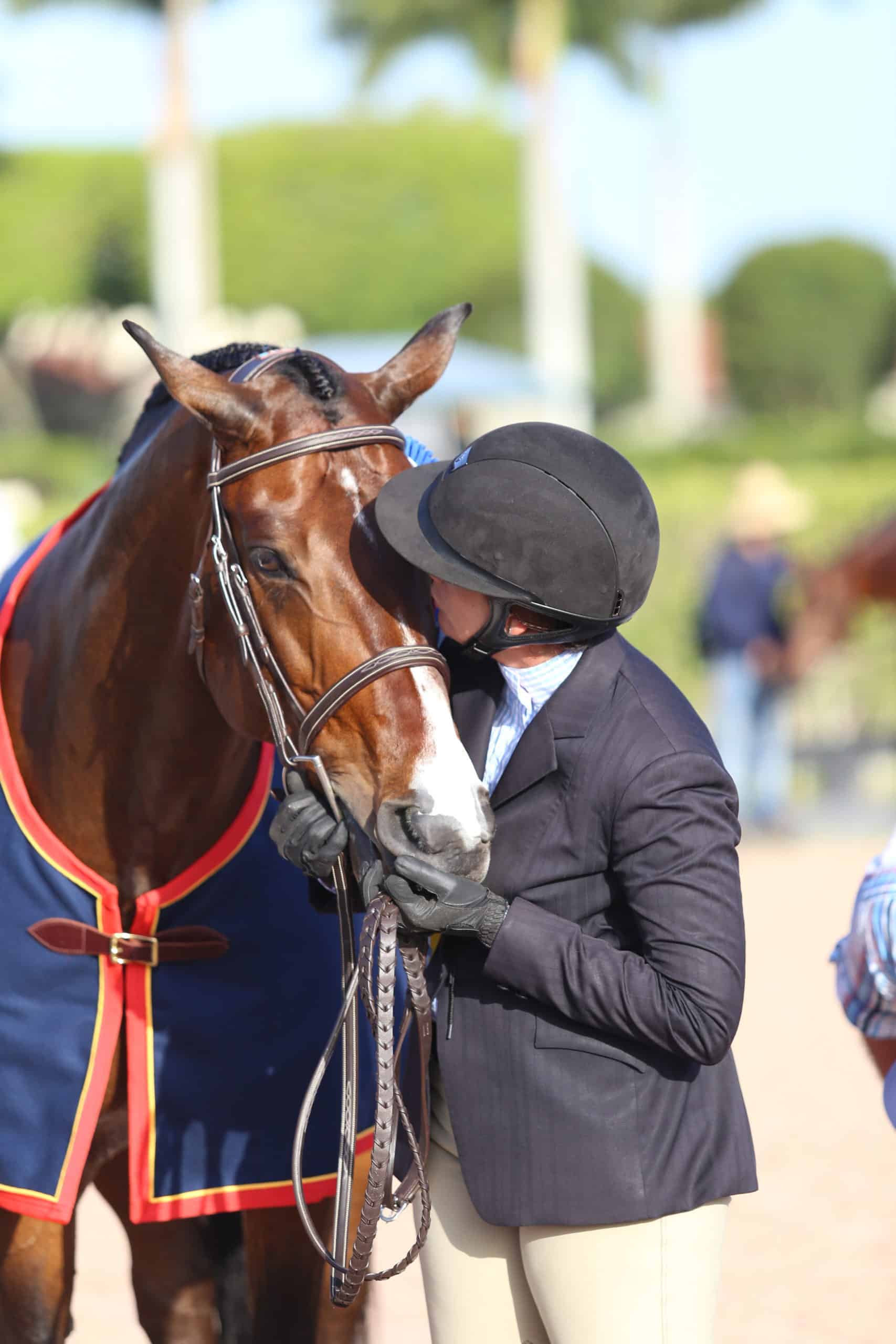
HD: I think it goes back to the eyes, too, Amanda. I am also drawn to a horse with a kind eye, or special way of looking at you. You already mentioned that it’s one piece of the puzzle you look for in a great horse—how the horse looks at you and connects with you when you get off. I think it’s especially interesting that they have the same sire.
HD: I know you’ve mentioned that you’re very hands on and spend a lot of time with Lafitte. Could you tell us a bit about the care and your bonding time with him? Do you think it comes into play when you walk in the ring?
AS: I think 100% it comes into play. Lafitte is sensitive and a creature of habit and routine. He definitely knows his people and makes relationships with them, so the more time I spend with him, the better. I certainly have people that work for me, and there are other people that do a lot with Lafitte—I don’t want anyone to think that I’m the only one that’s there with him. But that being said, Tim and I are both very hands-on in the barn. A lot of times when we go to these larger horse shows like Derby Finals or Devon or the National Horse Show, or when we go to Palm Beach for the Hunter Spectacular, it’s usually just me, Tim, Lafitte, and our dogs that go. My friends will joke that it’s like we’re on our family vacation! It’s like,Tim and Amanda, Lafitte, and their dogs pick up and go off to these big, important events. And I really like it that way.
HD: It’s the ‘A-Team’!
AS: We do care in the barn, and we do night check. I mean, I do night check every night in New Jersey, which is some of my favorite time with the horses. It’s just so quiet and peaceful in the barn. But Lafitte just has a way of commanding your attention. When I drive up in the morning, the first thing I do is go and say good morning to Lafitte, and he is usually the first horse that I ride every day. He watches you all day long. Any time I’m walking down the aisle, Lafitte’s head is out, his eyes are on me, and he’s focused on what we’re doing. So he really draws you in and keeps you there. There’s no way to not pay him a lot of extra attention.
But I love them all. And that’s the beauty of having a smaller business, because I can really give a lot of attention to each and every one of them.
HD: And you’ve won on so many horses! I can barely keep up with all your wins on them. Do you have a particular ‘type’ of ride, or are they all different and you adapt?
AS: Well, I like horses that are short-coupled. I like horses that are not too long from nose to tail. But that being said, I think I’ve had all different types, and I have tried to learn and adapt to each one.
We have a lot of mares right now, which is interesting because I started my career with almost all mares. I think we have 16 horses in our barn right now, and eight of them are mares, with another on the way. When we were going from Ocala to Aiken this year (we leave Ocala and stop in Aiken, SC for two weeks to show), and we had two tractor trailers, and one entire tractor trailer was all mares, which I think is fairly uncommon for most businesses!
HD: You have your human ladies and your equine ‘ladies’!
AS: Yeah, exactly! I wouldn’t say I have a particular type, except for, as I said at the beginning, I always really like horses that have pretty eyes and eyes that communicate with you.
I really like horses in our barn to be pretty and have good conformation. Because in the long run, I believe the horses with good conformation have an easier time doing the job and stay more sound. Beyond that, I really think it’s important that the horses have very balanced and rhythmical canters. Whether I’m showing them or whether the adult amateur is showing them, it just makes the whole job a lot easier if the horses have natural rhythm and balance to their canter.
Also, it’s important for them to have good expressions. I really have aspirations to be a judge. I haven’t found the time to do that yet, but when I’m watching horses, it’s really important to me that the horses look like they’re having a good time, and wearing their ears well—looking like they love their job, which is something Lafitte is really good at.
.
HD: I didn’t know you’d like to become a judge! Another thing I didn’t know about you. Is that one of your goals? It seems you’ve won everything, but I’m sure there’s always something more…
AS: I have a few more goals as a rider as well! But I would also like to start my career as a judge. I just really love watching horses, so I think it’s something that I would really enjoy.
I haven’t won Derby Finals yet, and I’d really like to do that. I’ve done well in Derby Finals, but I haven’t been lucky enough to be the winner. I also really love Green Incentive Finals [USHJA Green Hunter Incentive Championships]. I would like to continue to have quality young horses and have Green Incentive Finals in Kentucky as our goal. I love all the classes associated with WCHR—so The Hunter Spectacular in Wellington [Florida] and the Pro Finals at Capital Challenge [Horse Show]. Some of those classes I’ve already won, but it would still be exciting to win them on new and different horses.
HD: And you’ve mentioned the planning that goes into winning a big class like the The Hunter Spectacular. I’m fascinated by the planning. I’ll go back to McLain and Sapphire. I always loved hearing McLain talk about his planning that goes into winning the big events. How do you plan for an event or a class like that?
AS: My life with Lafitte is a little different than my life with a lot of the other horses. At this point in his career, he really knows what he’s doing. We usually sit down (myself, Cheryl, and Tim) at the beginning of the year, and we come up with some classes that we think are most important for Lafitte. Typically in the past, it’s been The Hunter Spectacular in Wellington and Derby Finals as two of our most important classes. Once we pick those goals, we step back and make his schedule around what we think we need to do to have him peak at those specific events. The World Equestrian Center [WEC] in Ocala has been instrumental for him the last couple years for those two classes because we have huge rings to show in, with beautiful jumps, and night classes. There aren’t many venues that you get to really practice that. At The Hunter Spectacular in Wellington and for the finals at Derby Finals, you’re at night under the lights in a huge venue with beautiful jumps. So we definitely pick the events first that are important to us, and then we step back and plan the weeks that we think he should show, what we think he should do, to prepare for those classes as the end goal. And it’s really fun to be strategic about it and plan it all out.
HD: It’s great that the horses have those classes to prepare and aren’t blindsided walking in under the lights!
AS: Yes, exactly. And I do that too with the young horses—we’ll have Green Incentive Finals as a goal, and we’ll use some of those smaller derbies at WEC or we’ll pick some national derbies during the year. I try to take them to horse shows that I think are high-quality and have the best jumps and the best course designers. Everything is geared towards the end goal of development or of getting to a certain class.
HD: How does Lafitte handle those night classes? What is he like under the lights?
AS: Lafitte loves the atmosphere, and he is not intimidated by it, but he sometimes feels too excited by it. I would definitely describe him as having a perfectionist personality. I think he loves the atmosphere, and it really helps him up. I’ve found in the past that it’s important to show him in a class or two during the week before we have a big event like that because if we don’t, he has too much energy! I don’t mean it in the sense that he’s wild—he’s not a horse that you have to really work down or lunge a lot to get ready. It’s more like I usually think he needs to get in the ring and do a class or two—otherwise it’s almost like he tries a little too hard.
Tim spends a lot of time with him in Wellington for that class. I believe The Hunter Spectacular is Saturday night, and they have some amateur classes in that ring Friday night. I usually end up being there on Friday night with some amateur clients, and that class goes late. So Tim historically will lead Lafitte down to the ring that night, hand-walking down, and just hang out with him at the ring under the lights in the atmosphere that we’d be showing in the next night. And again, he’s not afraid, and it’s not like he needs to get down there to see it. It’s more that he needs to not be too pumped up.
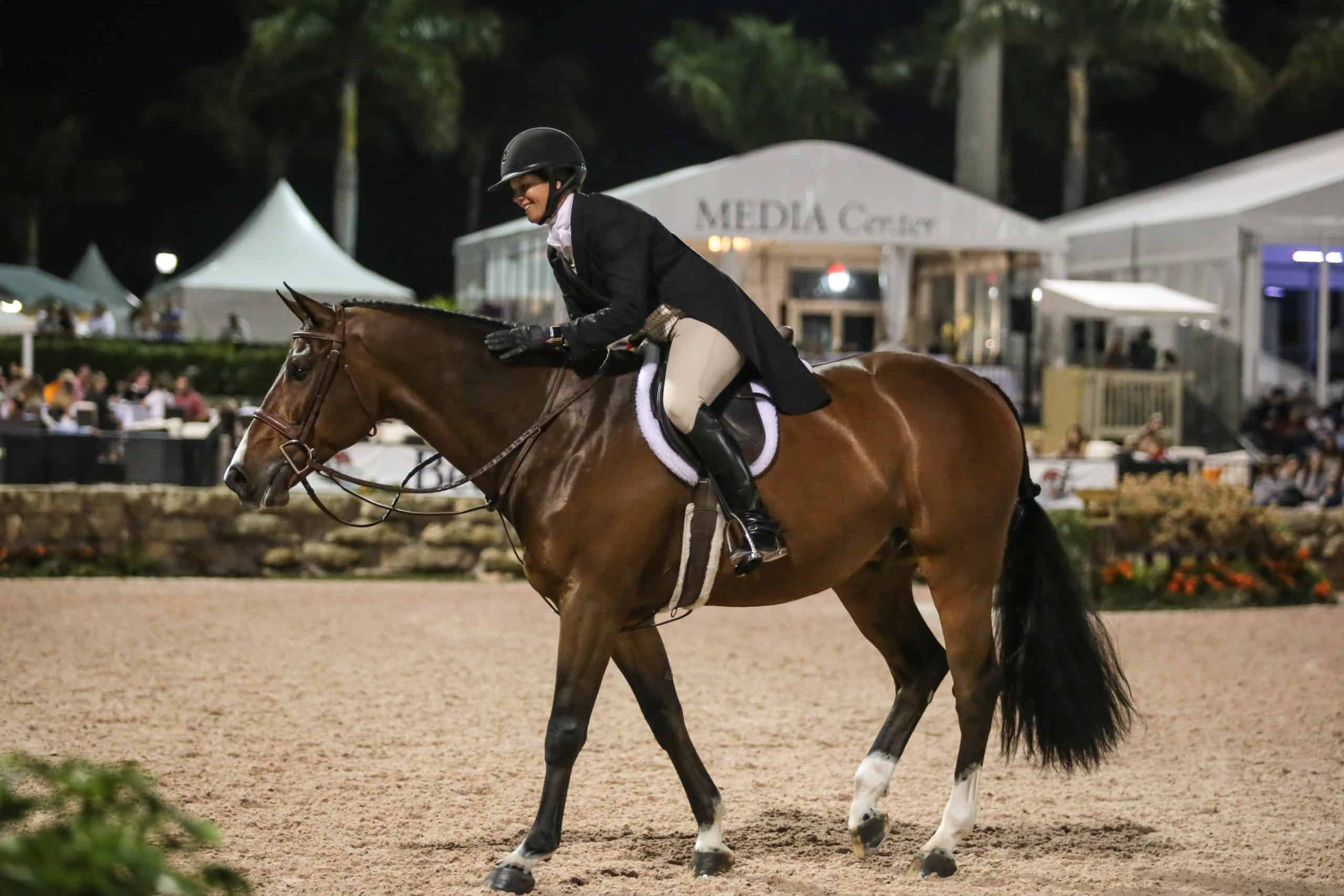
HD: Thank you so much for being patient with me and all my questions! I love hearing the behind-the-scenes with you and Lafitte. I have read many (if not all) of your features and interviews, and I enjoyed learning about your psychology degree. I think it’s fascinating how you say it’s helped you in the ring and with training your clients. What is something else we don’t know or may be surprised to learn about you? And Laffitte?
AS: Well, a lot of people don’t know I have a sister! Her name is KC Hunter, and she’s a horse person too. But she owns a beautiful 50-acre farm in Ocala, and she does retirees and lay-ups, and some people send her broodmares or ponies to get started. I’m always amazed that even now with Facebook and everything else, how many times I’ll say something to somebody about my sister, and they say, “You have a sister?!”
Another thing is many people know that I’m superstitious and that I love blue. I always have my blue nails and my blue necklace, blue bracelet, and all that… but not everybody knows that I also have lucky blue underwear!
HD: My gosh. So THAT is the secret to your success… Is that the first thing you pack for the shows?
AS: Oh, absolutely! And this is a funny story—one of my last trips to Europe, I brought my lucky blue underwear. I was with David Artos, and we had been trying horses for a few days, and hadn’t really seen any we liked. Then one particular day, we saw like three or four horses that were really great. After the fourth one, he said, “Well, this is such a great day!” And I replied, “That’s because I wore my lucky blue underwear!” He was laughing so hard and said, “I’m going to have to get myself a pair of those!”
HD: Now I may need to get some too… Now how about Lafitte? Any fun facts we may not know?
AS: A lot of people know that Lafitte was the first equine ambassador for the Equus Foundation, and that he is the main character in a children’s book that Cheryl Olsten wrote. They might not know that he’s by Darco and has the same sire as Sapphire.
People also might not know that Lafitte has two siblings in the United States right now! They’re his half-siblings—they have the same mother as Lafitte. They’re both owned by Dr. Betsee Parker. One of them is a five-year-old gelding that Hunt Tosh is showing now in the Green 3’ named ‘Duke of Argyle’. The other is a mare named ‘Beverly’ that hasn’t gotten started under saddle yet.
HD: Wow. Two to watch for the future for sure!
AS: And they might not know that Lafitte has a stuffed unicorn that travels with him and hangs in his stall. It even travels in the trailer with him, he’s had it a few years now!
HD: That’s so sweet! Does the unicorn have a name?
AS: No, it doesn’t. But an interesting side note, the very first night that Tim hung it in his stall, Lafitte plucked out its eyes! It has no eyes now, but he really loves it. Tim says Lafitte thinks it’s weird that it’s staring at him all night, so he had to take its eyes out! But it’s a pink unicorn, and when we go on our ‘Family Vacation’, it hangs in his box stall in the trailer. We ship the unicorn with Lafitte, and it lives in his stall at the show. It’s like his little security blanket!
HD: You said earlier that Lafitte is practically human. He has probably named the unicorn himself!
AS: You’re right, he probably has named it!
HD: Well, this has been great, Amanda. Thank you! You are always so generous with your time.
It’s always wonderful to talk to you, but it’s been especially fun to learn new things about you and Lafitte, and some behind the scenes at Ashmeadow!
For Amanda Steege, finding and choosing the winning mount in the hunter ring is an art. Even she couldn’t find the words to describe this unique, intuitive gift of knowing when it’s “the right horse”, but Amanda also has winning down to a science. She has picked and chosen techniques from her years of growing up immersed in her family’s training operation. She has learned what works, what doesn’t, and has created the perfect potion for Ashmeadow’s consistent and lasting success in the hunter ring. After our conversation, it occurred to me that at the heart of it all, what ties it all together, is Amanda’s gift of creating and fostering relationships. Relationships with her students, with her horses, and with Amanda and Lafitte’s long list of fans—myself included. I know I will continue to excitedly follow Amanda and Ashmeadow, cheering them on along the way. It’s what we all need a little more of in our lives—positivity, compassion, and the reminder that relationships are the foundation to success. Amanda’s undeniable natural talent and her gift for building these relationships will keep her in the Winner’s Circle for a long time— along with some help from the lucky blue underwear…





